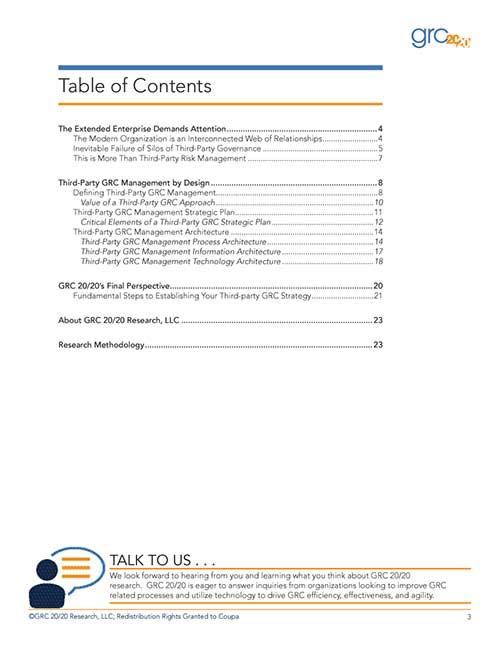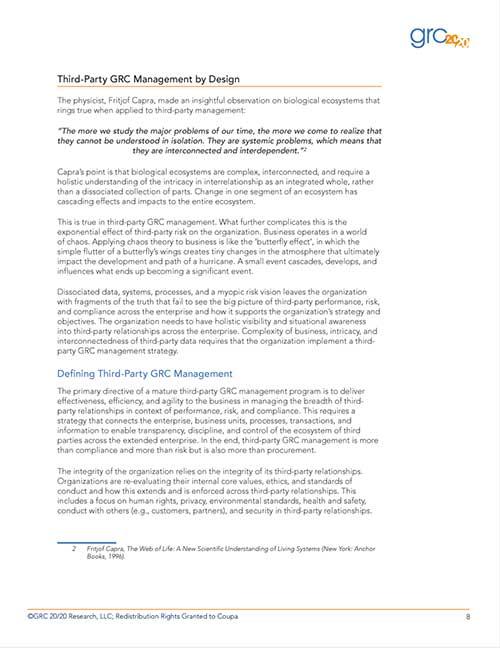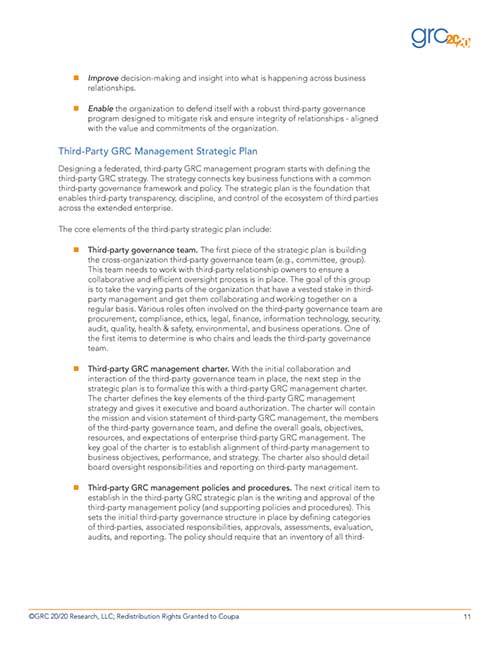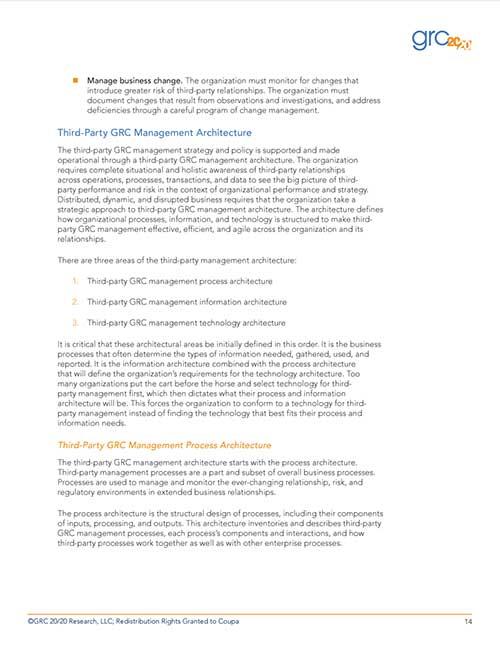
Third-Party GRC Management by Design
More than ever before, organizations consist of an interconnected web of relationships and transactions that rely on third parties. If this describes your business, and if you’d appreciate guidance relating to your third-party governance processes, you will want to download this white paper.
A Strategic Plan and Actionable Steps for Third-Party GRC Management
In his white paper from the analyst firm, GRC 20/20, you’ll learn how to:
- Develop your organization’s third-party governance team
- Optimize processes, information, and technology architecture
- Design effective periodic risk assessment and monitoring
Organizations often struggle to govern their third-party relationships—and too often manage risk and compliance in silos that then fail to see the big picture (and exponential consequences) of risk exposure.
Approaching third-party GRC management with a design mindset creates holistic visibility and situational awareness across departments. The questions are—how do you define third-party GRC management? What are the critical elements of a strategic plan? And, what are the fundamental steps for success?
FAQ




